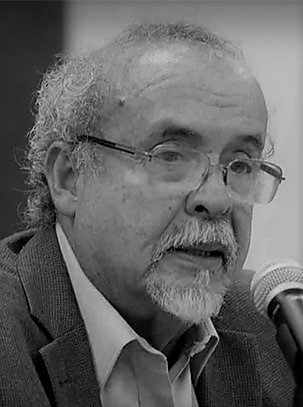HISTÓRIA E CONTRAPONTO DO CARIBE AFROANDALUZ
DOI:
https://doi.org/10.20873/uft.2179-3948.2020v11n2p287Keywords:
Caribean, History, Afro-andalusianAbstract
This text is a Portuguese translation of the first chapter of the work El mar de los deseos: El Caribe afroandaluz, historia y contrapunto by the Mexican historian Antonio García de León, published by the Fondo de Cultura Económica do México. The translated chapter is entitled, in the original work, “The Sea of Encounters, an American Mediterranean”. In our translation the title chosen has been “History and counterpoint of the Afro-Andalusian Caribbean”. This modification is justified for several reasons, one of them has been to give centrality to the concept of History since this chapter is a historical approach. Another reason has been to draw with this translation, a miniature of the Afro-Andalusian Caribbean universe that Antonio García de León presents in his work. The complete work as well this first part try to draw a new horizon of reflection on the Caribbean that collects and incorporates not only the experience of Africa, but also that of southern Europe, in this case Andalusia and the territories conquered by Castile in the south of the peninsula as a prelude to the world to be formed in the Caribbean.
Downloads
References
ÁVILA, Juan de. Relación verdadera que como testigo de vista haze el reverendo padre Fray Jhoan de Abila [...] del saco y suceso que hizo la Armada y Junta de Piratas en la Ciudad de la Nueva Veracruz el 18 de mayo de 1683. México: Alcancía, 1937.
BELTRAN, Gonzalo Aguirre. La población negra de México. México: FCE/Estudio etnohistórico, 1946.
BENITEZ ROJO, Antonio. La isla que se repite. Barcelona: Casiopea, 1989.
BLACKING, John. Le sens musical. Paris: Les Éditions de Minuit, 1980.
BURKE, Peter. La cultura popular en la Europa moderna. Madrid: Altaya, 1997.
BUXÓ, José Pascual. (edição e prólogo.). Arco y certamen de la poesía mexicana colonial (siglo XVIII). Xalapa: Universidad Veracruzana, 1959, p. 18.
CANCLINI, N. G. Culturas hibridas. Estrategias para entrar y salir de la modernidade. México: Grijalbo, 2002, p. III.
CARTAY, Rafael. Ideologia, desarrollo e interferencias del comercio caribeño durante el siglo XVII. Caracas: Biblioteca da Academia Nacional de Historia, 1988.
CHAUNU, Pierre y Huguette. Séville et 'Atlantique, 1504-1650. Paris: IHEAL, 1955-1959. 9 vols.
CUNILL GRAU, Pedro. “La geohistoria” In: CARMAGNANI, Marcello; CHAVEZ, Alicia Hernández; ROMANO, Ruggiero. Para una historia de América T. Las estructuras. México: Fondo de cultura economica/El Colegio de México/Fideicomiso Historia de las Américas, 1999, pp. 13-159.
ECHEVARRÍA, Bolívar. “El ethos barroco”. In ECHEVARRÍA, Bolívar (org.). Modernidad, mestizaje cultural y ethos barroco. México: El equilibrista/UNAM, 1994.
FOSTER, George M. Cultura y conquista: la herencia española en América, Xalapa: Universidade Veracruzana, 1960.
GARCÍA DE LEÓN, Antonio. “El Caribe afroandaluz: permanencias de una civilización popular.” La Jornada Semanal. N. 135. México, 12 de janeiro de 1992.
GARCIA LEON, A. Tierra adentro, mar en fuera. El puerto de Veracruz y su litoral a Sotavento, 1519-1821. México: Fondo de cultura econômica, /Governo de Vera Cruz /Universidade Veracruzana, 2011.
HUMBOLDT, Alexander Von. Ensayo político sobre el Reino de la Nueva Espanha. México: Porrúa, 1984.
LAPESA, Rafael. “Orígenes y expansión del espafol atlântico.” In GOIC, Cedomil (comp.). Historia y crítica de la literatura hispano-americana. vol. 1: época colonial. Barcelona: Crítica, 1988, pp. 65-74.
LE BRETON. El sabor del mundo. Uma antropologia de los sentidos. Buenos Aires: Nueva Visión, 2007:
LEONARD, Irving. La época barroca en el México colonial. México: Fondo de Cultura Econômica, 1976.
NAZARIO, Manuel Álvarez. Arqueologia linguística. Estudos modernos dirigidos ao resgate e reconstrução do Arawak Taino. San Juan: Editorial da Universidade de Porto Rico, 1996.
NAZÁRIO, Manuel Álvarez. El elemento afronegroide en el espariol de Puerto Rico. Contribución al estudio del negro en América. San Juan de Puerto Rico: Instituto de Cultura Puertorriquefa, 1974,
ORTIZ, Fernando. El huracán. Su mitologia y sus símbolos. México: Fondo de Cultura Econômica, 1947.
PARRY, John H. SHERLOCK, Philip. Historia de las Antillas. Buenos Aires: Kapelusz, 1976.
RODRÍGUEZ LORENZO, Sergio M. La Carrera de Índias. La ruta, los hombres, las mercancías. Cantabria, 2012.
SAINT-MÉRY, Moreau de. Description topographique, physigue, civile, politique et historique de la partie française de L’Isle de Saint-Domingue. 2 tomos. Filadelfia, 1797- 1798.
TePASKE, John. “La política española en el Caribe durante los siglos XVII y XVIII.”In: RODRIGUEZ, Antonio Acosta y FERNANDEZ, Juan Marchena (comps.). La influencia de Esparia en el Caribe, la Florida y la Luisiana, 1500- 1800. Madrid: Instituto de Cooperación Iberoamericana, 1983, pp. 62-63.
TORRES RAMÍREZ, Bibiano. La Armada de Barlovento. Sevilha: Escuela de Estudios Hispanoamericanos, 1981.
VEJA, Carlos. Panorama de la musica popular argentina, con un ensayo sobre la ciencia del folklore. Buenos Aires: LOSADA, 1944 [Edição fac-símile em homenagem ao centenário de Carlos Veja, 1988].
VON GRAFFENSTEIN, Johanna. Nueva Espanha en el Circuncaribe, 1779-1808. Revolución, competencia imperial y vínculos intercoloniales. México: UNAM, 1997.
WECKMANN, Luis. La herencia medieval de México. México: El Colegio de México, México, 1984, 2 vols.

Downloads
Published
How to Cite
Issue
Section
License
Os autores mantêm os direitos autorais e concedem à revista o direito de primeira publicação, com o trabalho simultaneamente licenciado sob a Creative Commons 4.0 que permite o compartilhamento do trabalho com reconhecimento da autoria do trabalho e publicação inicial nesta revista.
Os autores têm autorização para assumir contratos adicionais separadamente, para distribuição não-exclusiva da versão do trabalho publicada nesta revista (ex.: publicar em repositório institucional ou como capítulo de livro), com reconhecimento de autoria e publicação inicial nesta revista.









